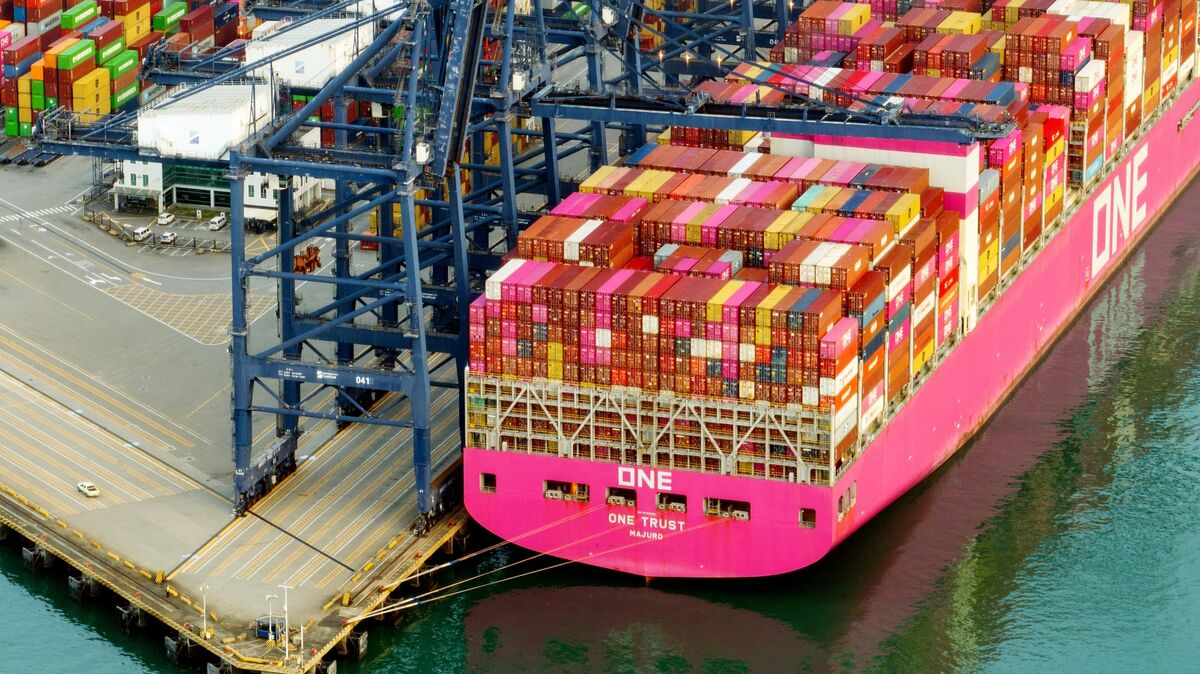Trump's Tariffs: Tough Times for Chinese Shipping
Editor’s Note: The ongoing impact of Trump-era tariffs on Chinese shipping continues to unfold, presenting significant challenges to the global trade landscape. This article analyzes the situation and offers insights into its ramifications.
Why This Topic Matters
The ripple effects of the US-China trade war, initiated by former President Trump's tariffs, continue to reshape global trade dynamics. This article focuses on the significant impact on Chinese shipping companies, examining the economic consequences and broader implications for international commerce. Understanding this impact is crucial for businesses involved in global trade, investors monitoring market volatility, and policymakers crafting future trade strategies. We'll explore the key challenges faced by Chinese shipping lines, analyze the strategic responses they've implemented, and consider the long-term consequences for the industry and the global economy.
Key Takeaways
| Challenge | Impact | Response |
|---|---|---|
| Reduced US-bound Cargo | Decreased revenue, underutilized capacity | Diversification of routes, cost optimization |
| Increased Shipping Costs | Reduced profitability, competitive pressure | Negotiation with clients, efficiency gains |
| Geopolitical Uncertainty | Volatility in demand, unpredictable markets | Enhanced risk management, strategic partnerships |
Trump's Tariffs: A Deep Dive into the Chinese Shipping Crisis
The imposition of tariffs on Chinese goods by the Trump administration significantly impacted the volume of cargo shipped between the US and China. This directly translates to reduced revenue streams for Chinese shipping companies, many of whom had heavily relied on this lucrative trade route. The sudden decrease in demand led to underutilized capacity, forcing companies to operate at a loss or significantly reduce their profit margins.
Key Aspects of the Crisis:
- Reduced Cargo Volume: The immediate consequence was a sharp decline in the volume of goods shipped from China to the US.
- Increased Operational Costs: Tariffs increased the overall cost of goods, affecting both pricing and demand.
- Geopolitical Uncertainty: The fluctuating nature of trade relations added another layer of complexity, making it difficult for companies to plan for the future.
- Increased Competition: The diminished profitability forced companies to compete aggressively for the remaining cargo, further depressing margins.
Detailed Analysis:
The impact wasn't uniform across the board. Larger, more diversified shipping companies with broader global networks weathered the storm better than smaller, more specialized firms heavily reliant on US-China trade. Many Chinese shipping lines reacted by diversifying their routes, seeking new trade partners in Southeast Asia and other regions. Cost-cutting measures were implemented, including layoffs and streamlining operational procedures. However, many companies still struggle with lingering effects of the tariffs.
Diversification Strategies: A Lifeline for Chinese Shipping
Diversification of Trade Routes
The decrease in US-bound cargo prompted Chinese shipping companies to actively seek alternative markets. This involved investing in new routes, expanding existing networks to include Southeast Asia, Africa, and South America. This strategy aimed to mitigate the impact of reduced US trade and secure a more balanced portfolio.
Cost Optimization and Efficiency Gains
Increased operational costs necessitated a comprehensive review of expenses. Shipping companies implemented various cost-cutting measures, from optimizing logistics and improving vessel utilization to negotiating more favorable contracts with port authorities and suppliers. Technological advancements were also leveraged to increase efficiency and reduce operating expenses.
People Also Ask (NLP-Friendly Answers)
Q1: What is the impact of Trump's tariffs on Chinese shipping?
A: Trump's tariffs significantly reduced the volume of US-bound cargo from China, leading to decreased revenue, underutilized capacity, and increased competition for Chinese shipping companies.
Q2: Why are Chinese shipping companies struggling?
A: Reduced cargo volume due to tariffs, increased operational costs, geopolitical uncertainty, and intense competition have all contributed to the struggles faced by Chinese shipping companies.
Q3: How have Chinese shipping companies responded to the challenges?
A: They have responded by diversifying trade routes, implementing cost-optimization measures, improving efficiency, and forming strategic partnerships.
Q4: What are the long-term implications for Chinese shipping?
A: The long-term implications include a reshaped global trade landscape, increased reliance on diversified trade routes, and a more competitive shipping industry.
Q5: What can businesses do to prepare for similar trade disruptions?
A: Businesses can develop robust risk management strategies, diversify their supply chains, and remain flexible to adapt to changing trade dynamics.
Practical Tips for Navigating Trade Uncertainty
Introduction: The volatility of global trade necessitates proactive measures for businesses involved in international shipping. Here are key tips for navigating future uncertainties:
Tips:
- Diversify your supply chain: Don’t rely on a single source or route.
- Build strong relationships with multiple logistics providers: This provides flexibility and resilience.
- Implement robust risk management strategies: Identify potential disruptions and develop mitigation plans.
- Stay informed about trade policies: Monitor changes in regulations and adapt your strategies accordingly.
- Invest in technology: Utilize data analytics and automation to improve efficiency and reduce costs.
- Negotiate favorable contracts: Secure competitive pricing and flexible terms with your suppliers and logistics partners.
- Build a flexible workforce: A workforce able to adapt to changes is invaluable during uncertain times.
- Maintain open communication: Keep lines of communication open with all stakeholders throughout your supply chain.
Summary: These tips emphasize proactive risk management and adaptability, ensuring resilience in a volatile global trade environment.
Summary
Trump's tariffs inflicted significant damage on Chinese shipping, forcing a period of adaptation and restructuring. The resulting challenges, including reduced cargo volumes and increased costs, spurred diversification strategies and a focus on operational efficiency. The long-term effects remain to be seen, but the experience underscores the fragility of global trade and the importance of robust risk management.
Closing Message
The story of Chinese shipping during the Trump tariff era highlights the interconnectedness of the global economy and the need for proactive responses to trade uncertainties. How will the industry evolve in response to future global trade shifts?
Call to Action
Share this article to inform others about the ongoing impacts of trade policies. Subscribe to our newsletter for updates on global trade and logistics.

